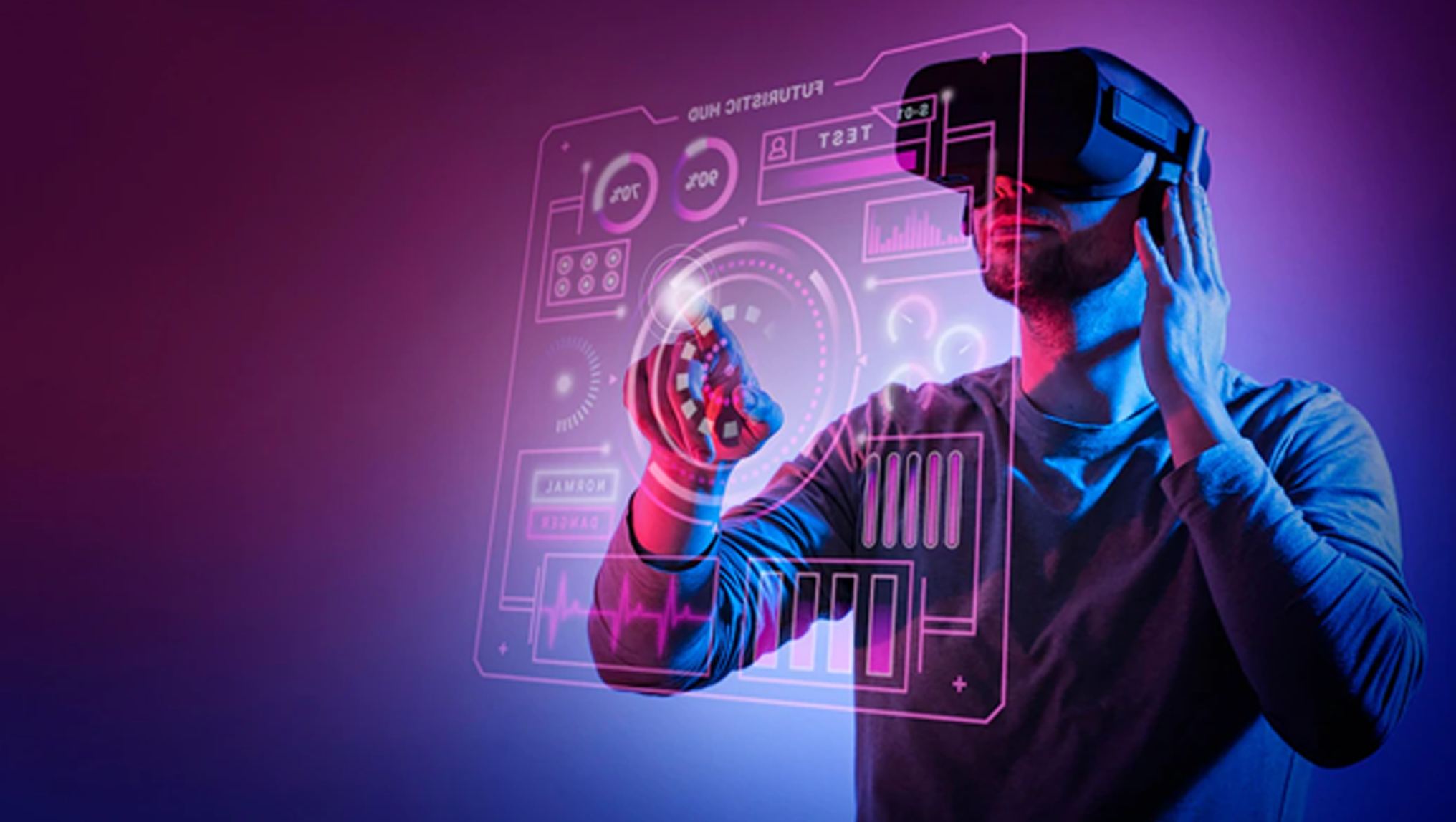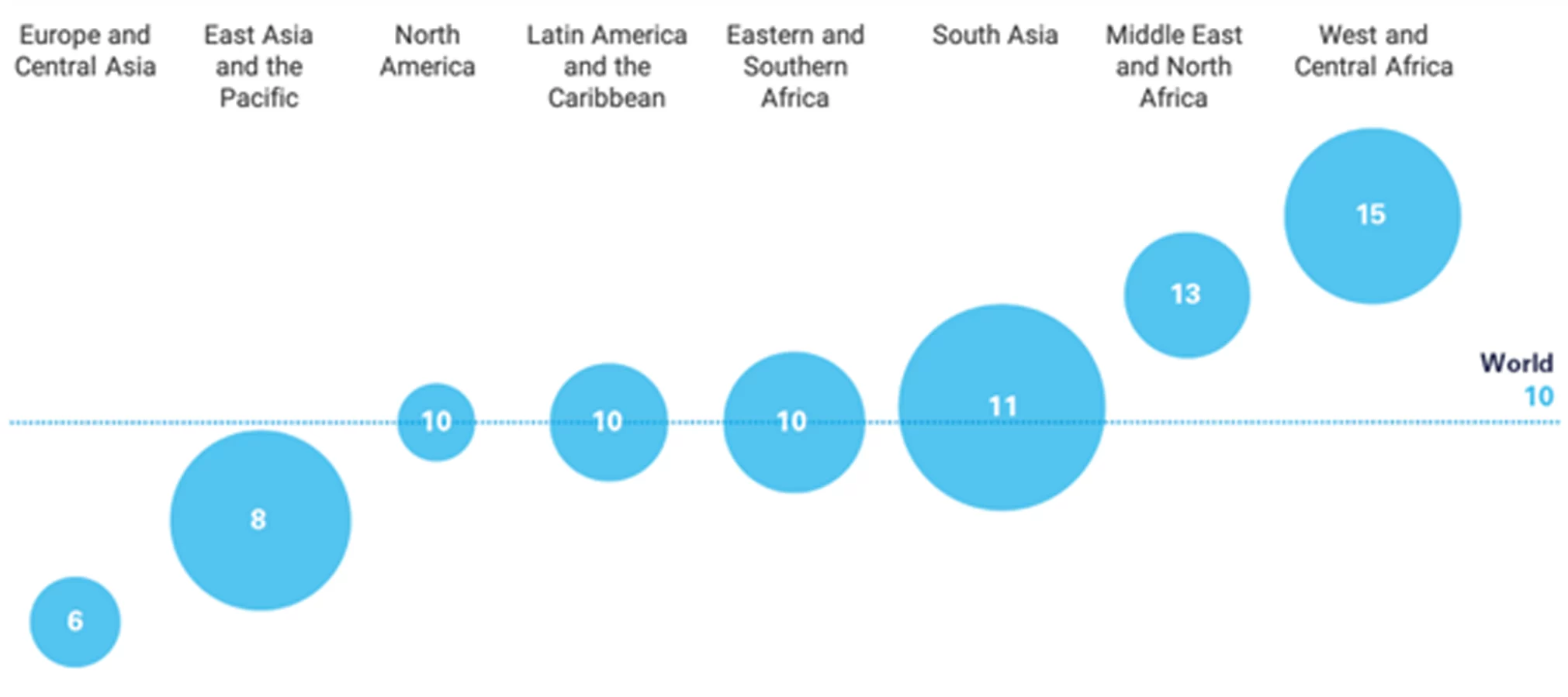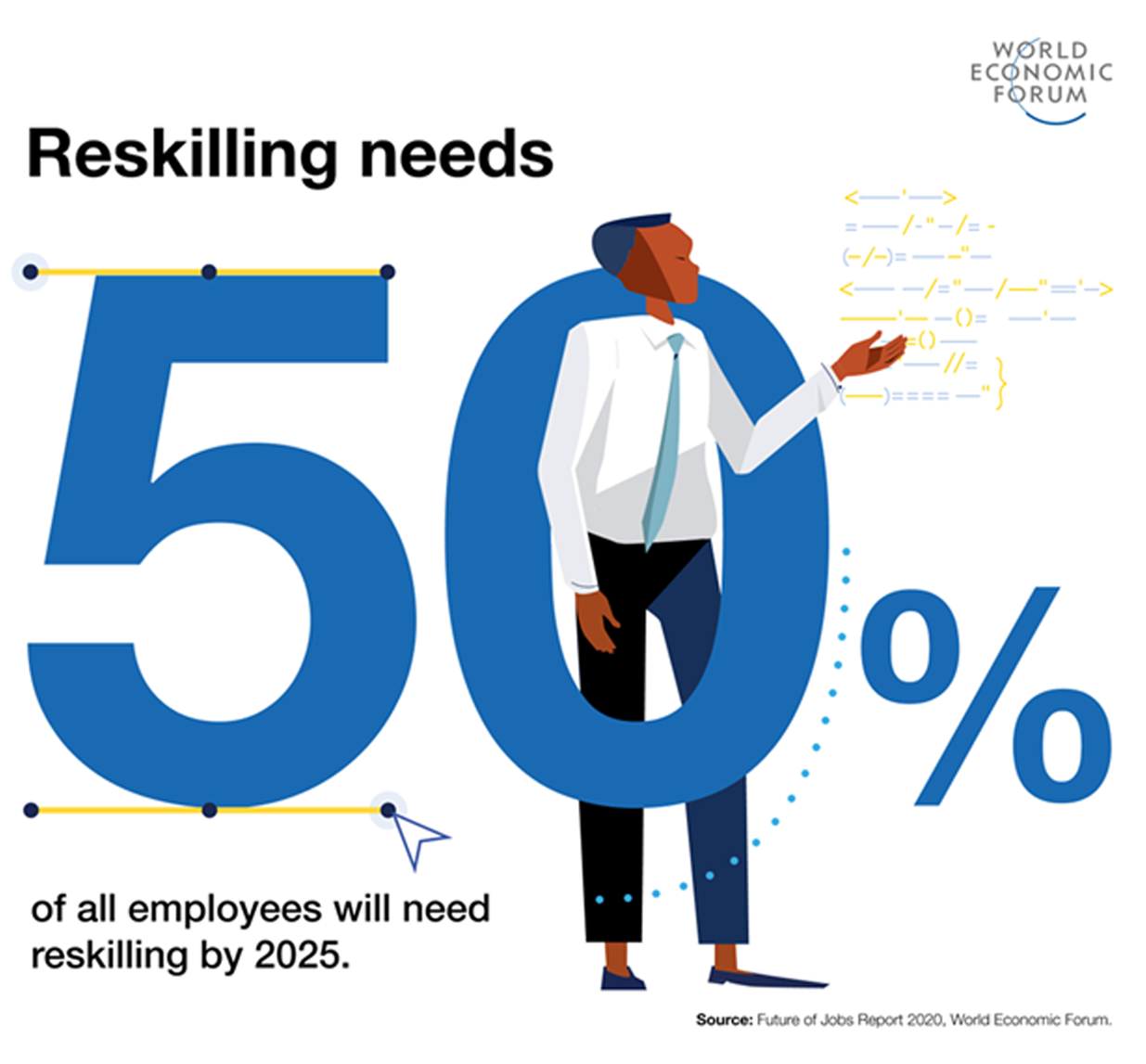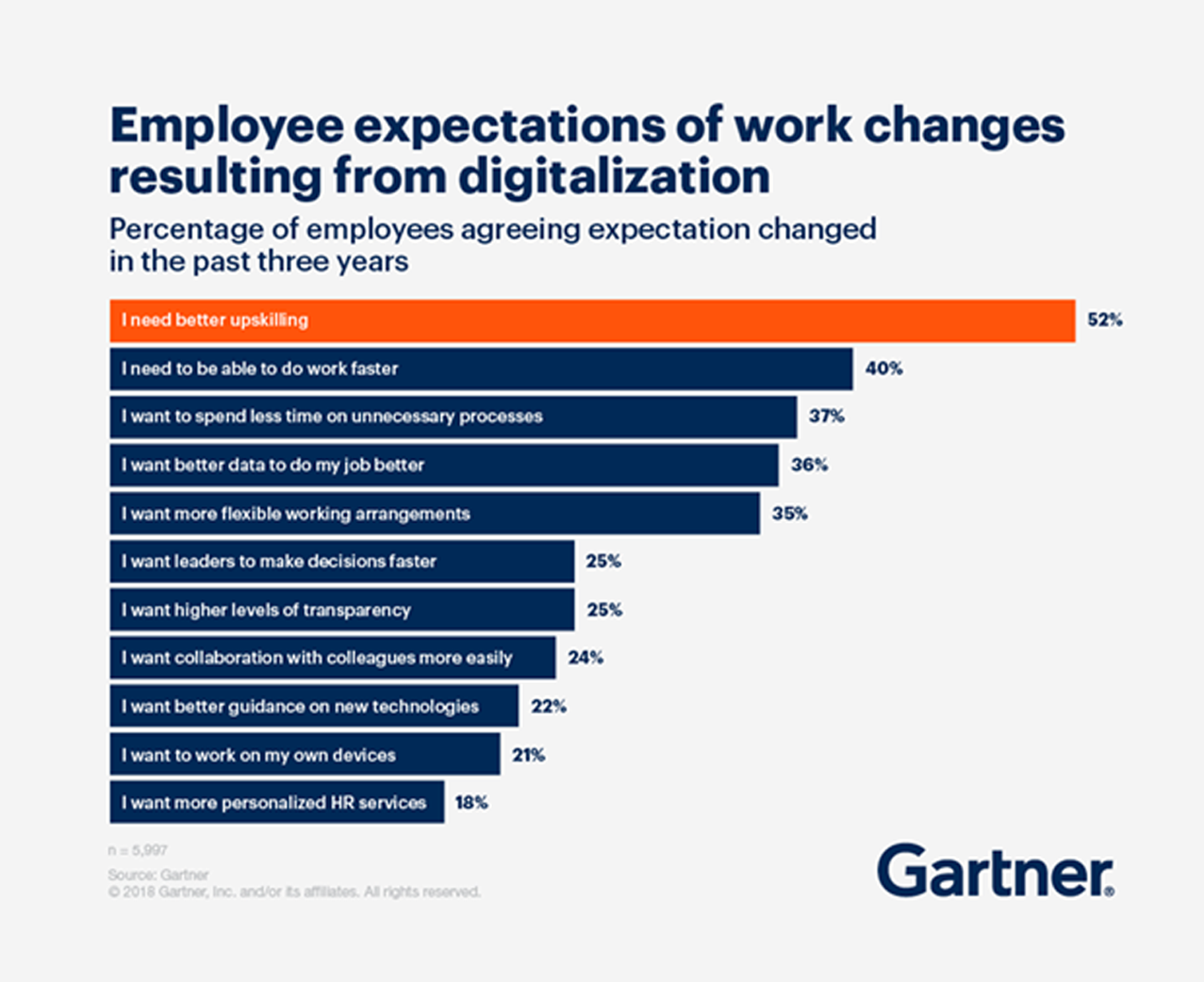Digital transformation in education is happening at a phenomenal rate than ever before in history. Today, the world is driven by technological advancements and marked by critical global issues making it crucial for educators to rethink the role of education.
As the world faces myriad global challenges, educational institutions need to be at the heart of formulating solutions to help future learners develop the life skills and competencies required to thrive in an ever-changing environment.
To put it simply—what is taught and how it is taught will evolve too.

Learning needs to be made more personal and accessible to all. The liberty to learn in the classroom, at home, or anywhere in between is gaining traction in this digital era. In the post-COVID world, educational institutions all across the globe have realized the significance of digital transformation in education.
According to a report by Global Market Insights Inc, the global e-learning market is expected to cross $1 Trillion by 2028. This is a result of technology becoming increasingly integral to the learning experience and teachers relying on its latest trends to drive better student outcomes.
In this post, we have compiled a list of top digital transformation trends that are making the learning experience more engaging, accessible, and collaborative for students and teachers alike.
Let’s get right to it.
7 top trends shaping the digital transformation of education
Here are 7 trends that are sparking monumental changes in the education world:
1. Personalized or student-centered learning
At present, learning is not on par with the rapid expansion of digital education.
Learning goals are the same for all, but the way learning is imparted should differ based on individual student preferences or what studies indicate works best for other students like them. The activity tracking feature on Classe365 allows teachers to keep a tab on student’s progress on the portal displaying the time spent by students on the content uploaded as well as the completion status of the activities if marked as done.
Personalized learning boosts student engagement and performance by charting out interactive learning experiences organized around individual student needs and interests.
Applying Artificial Intelligence (AI) to education has helped leading education institutions to progress on this path at an unimaginable pace and scale. AI-backed education makes learning more personal by enabling you to provide instant feedback, and real-time support as well as customize learning based on students’ strengths and needs.
AI can help teachers chart out homework and plan their future lessons while offering deep insights into how an entire class or an individual student is faring. This way teachers can offer targeted support to each learner and work on the areas that need improvement.
Student-centric learning is not just about offering tailored, real-time support but also about making educational content that meets the diverse needs of students.
For instance, the learning approach must be different for students with special needs such as visual or hearing impairment. A one-to-many model of learning will not be effective here. Instead, educational institutions should look at adopting assistive technology tools that enhance learning for students with disabilities, opening up possible solutions to deal with the specific needs of students both in a classroom and a distance learning setting.
Percentage of children aged between 0 and 17 years with disabilities in different regions of the world

Source: Unicef
2. Use of new technologies to enhance learning experiences
With the onset of Metaverse and other digital environments, the use of virtual and augmented reality is no longer confined to science fiction but has formed a part of our daily lives. Given their popularity among youngsters, educational institutions are eager to learn how these technologies can be applied to a classroom setting.
The idea here is to create enriching learning experiences that would not have been possible otherwise and to give teachers the ability to realize an unfulfilled student need. Applying these technologies can make experiential learning or ‘learning by doing’ a reality.
For example, augmented reality can be used to bring various science concepts to life. Students can now learn the inner workings of a beehive or experience the destructive nature of a hurricane—up close and personal with the help of AR.
Another digital transformation trend creating waves in the learning design space is gaming technology. According to Statista, there are a whopping 3.03 billion active video gamers worldwide and the numbers are only expected to rise with each passing year.
A learning experience that is built within a game framework focuses on self-guided learning techniques that encourage students to develop a growth mindset. Games make learning more fun and engaging. It gives you the motivation to try again even if you’ve failed a couple of times at it.
Technologies like AR and VR combined with gaming mechanisms and great teaching is the perfect recipe for teachers to design a learning experience that’s immersive, engaging, and extraordinary.
Let’s take a look at prominent examples of augmented reality in education:
The Community College of Beaver County in Pennsylvania was the first community college to adopt augmented reality at its main campus. It uses AR to deliver content such as audio, video, digital publications and more, giving students a chance to explore the campus in a fun and informative way. The app includes gamification elements to make the experience more engaging.
More recently, the Western University students got a chance to swim with the sharks, all thanks to AR. Students got to explore a basking shark up close and personal. In a traditional class setting, all they can do is see a picture or video of the shark. Using AR, they were allowed to view the anatomy of the giant shark and understand its behaviour, all without getting wet. This immersive style of learning is a world apart from the classroom lectures where students take on a more passive role.
Nearly 80 kindergartens in China applied AR technology to introduce children to the concepts of personal safety and self-awareness. AR backed interactive learning is believed to help students remember important information and apply it to life as they grow up.
3. Upgrading the role of a teacher
In the last couple of decades, the role of a teacher has evolved from being a transmitter of knowledge to a mentor who shapes the students’ learning journey. Teachers are no longer providers of knowledge but work alongside students to help them embrace skills that are essential to thrive in this era.
While we want teachers everywhere to take on this new role, the reality is far from it. Schools globally are witnessing a shortage of teachers. This is a problem that is likely to grow. According to UNESCO, 69 million teachers are required to be able to meet the universal standards of education by 2030.
With the current state of affairs, reaching this target seems far-fetched. Increasing workloads, poor pay, and lack of skill development are some of the key factors plaguing the once-flourishing teaching profession. Solving these issues is going to take time and effort.
That said, digital transformation in education plays a key part in uplifting the role of teachers. The use of technology gives students better access to information. Teachers, on the other hand, can serve as facilitators helping students make the most of their learning experience.
Technology also plays a huge role in freeing up teacher’s time by automating a lot of the repetitive, administrative tasks that would otherwise take up much of their time.
AI can take over tasks such as assessment, lesson planning and administration, saving about 13 hours of the teacher’s time in a week, allowing them to focus on more important aspects such as upskilling and personal development. Teachers need to have the right digital education tools to back them up, so they can actively play out their role in shaping student’s futures.
4. The rising demand for future leaders to tackle global challenges
The challenges that we see today such as lack of optimum access to education, poor digital literacy, and the unrest brought about by the pandemic are only rising. This calls for a renewed collective vision for education which should be based on the principles of collaboration, civic-mindedness, unity, and creative thinking.
To solve complex problems at a global scale, students must become self-directed learners. By giving them the right tools, you will enable them to securely explore the world around them.
Educational institutions are the best place to hone these skills and competencies. They are looked upon as powerful institutions that society relies on to help students embrace global mindsets and competencies needed to thrive in the future.
5. High-demand skills needed for work

According to the World Economic Forum, technological advances will result in the creation of 97 million new jobs by 2025, while 85 million jobs may cease to exist.
More than half of the daily tasks are likely to become automated in the coming years.
Educational institutions have a daunting task before them which is to identify which skills will be required in the future and which will turn obsolete. The World Economic Forum believes that the following 5 skills will become high in demand among employers by 2025:
● Analytical thinking and innovation
Possessing this skill will showcase your ability to overcome complex challenges in the real world.
● Active learning and learning strategies
By honing this skill, applicants will be well-positioned to process new information and make effective decisions
● Complex problem-solving
This refers to the ability to use the knowledge acquired and to apply it in solving complex problems.
● Critical thinking and analysis
Critical thinking allows you to connect ideas, evaluate arguments, conclusions, and alternate solutions to overcome challenges or make improvements.
● Creativity, originality and initiative
This refers to the ability to come up with original ideas and answers to issues.
6. Lifelong learning
The concept of lifelong learning is yet another digital transformation trend impacting the educational industry. It involves learning that continues beyond one’s formal school years.
As the current workforce is more open to moving from one career to another, acquiring new skills and knowledge continually over time becomes a necessity.
It is more important now than ever before for people to have access to education throughout their lives, should they wish to upskill.
Source: Gartner

Education is a lifelong pursuit which requires a perpetual motivation to learn.
On that note, educators must develop a mindset that is eager to learn, unlearn and relearn during their school years and beyond.
7. Removing Data silos and unifying platforms
Today a lot of organizations are relying on fragmented school management software to manage their processes and learning activities. If multiple systems generate data that don’t interconnect, the data loses its potential. When data is confined to different pockets across your institution, it is difficult to perceive its collective value.
As a result, more organizations are replacing multiple tools with unified solutions such as Classe365’s centralized platform for student data management.
With an integrated solution, you no longer have to switch between multiple standalone tools and are in a better position to make informed decisions that add value to the learning experience you offer.
The takeaway
By giving students access to the right digital tools and the ability to engage with one another and with the world around them, securely—you shape a future that’s rooted in collaborative problem-solving and engagement with an increased focus on personalized learning.
Classe365’s all-in-one solution is designed to simplify teaching and learning, empowering educators to create engaging lessons that foster teamwork, collaboration, and personalized learning. Get started with Classe365 to boost student engagement and enhance student learning experiences. Request for a demo today.
